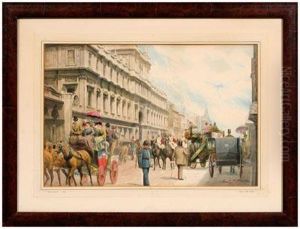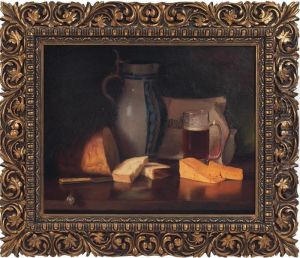Carl Joseph Becker Paintings
Carl Joseph Becker was a German painter born on May 18, 1820, in Düsseldorf, Germany. He was known for his historical genre paintings, which often depicted scenes from the Renaissance period with a particular emphasis on the lives of the bourgeoisie and the nobility. Becker was part of the Düsseldorf school of painting, a group of artists who were influenced by the teachings of the Düsseldorf Academy of Arts and who shared a common style characterized by fine detail, clear colors, and careful composition.
Becker received his artistic training at the Düsseldorf Academy, where he studied under famous painters such as Wilhelm von Schadow, who was a prominent figure in the Düsseldorf school. Becker's education at the Academy was integral to his development as an artist, as the institution was renowned for its rigorous program that emphasized drawing, painting, and the study of the human form.
Throughout his career, Becker became known for his ability to combine historical accuracy with artistic imagination. His works often featured scenes of everyday life from past centuries, imbued with a romanticized aura that was popular among the middle-class audience of his time. He was particularly skilled in depicting textures and materials, such as the intricate lace of a lady's dress or the polished wood of a 16th-century interior.
Becker's paintings were not only popular in Germany but also gained recognition abroad. He exhibited his works at various international expositions and won several awards for his contributions to historical genre painting. His art was part of the broader European interest in historicism during the 19th century, which saw a fascination with recreating and idealizing the past.
Carl Joseph Becker's artistic legacy continued even after his death on December 20, 1900, in Berlin, Germany. His paintings are still studied and appreciated for their historical value and their representation of 19th-century European art. His works can be found in several museums and art collections around the world, serving as examples of the Düsseldorf school's impact on the genre of historical painting.

